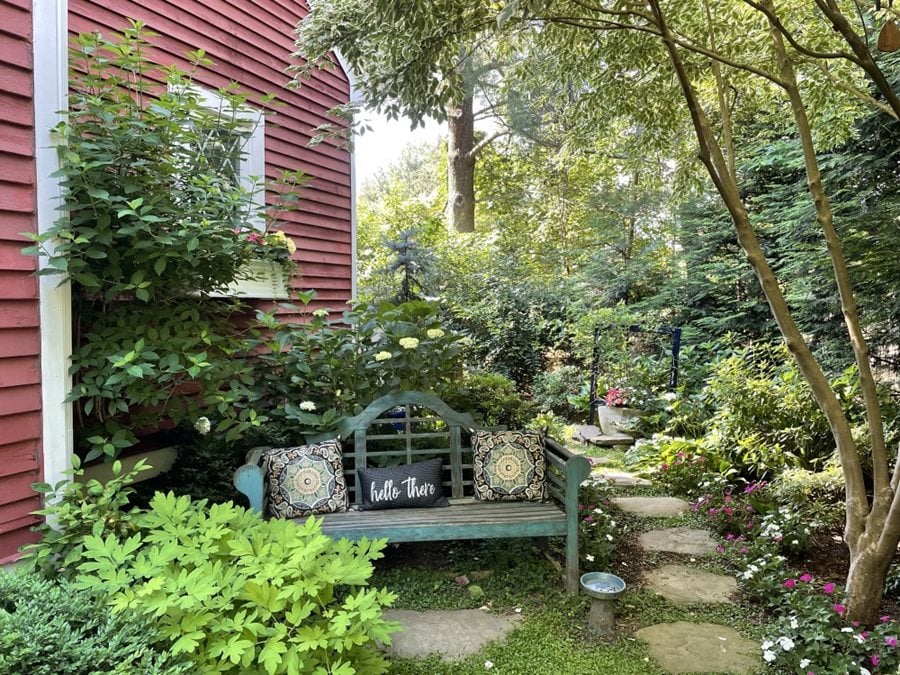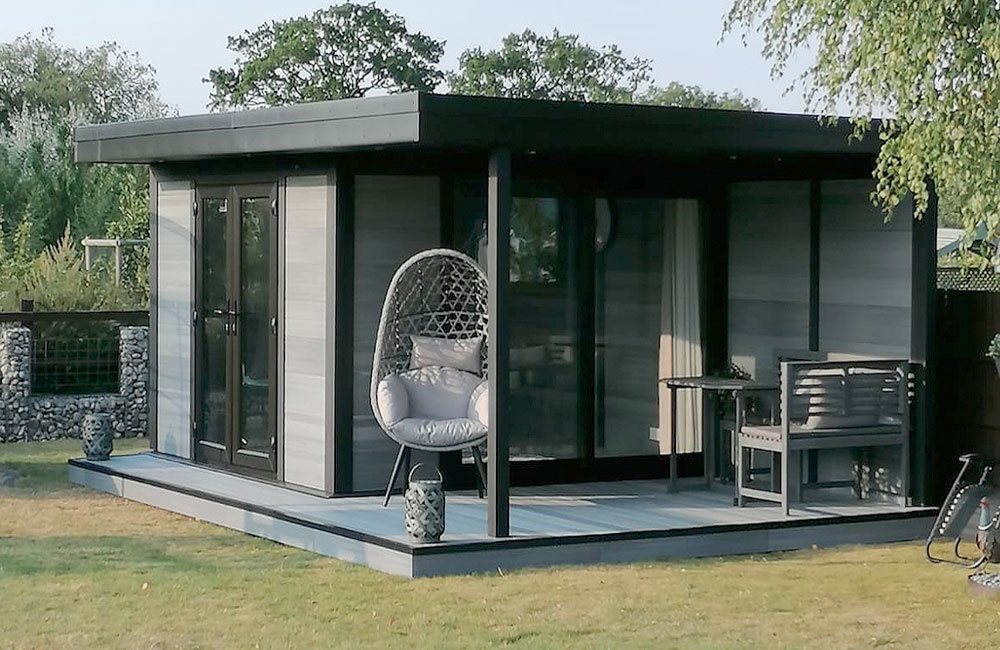Recommended Suggestions On Planning Permission On Garden Buildings
Wiki Article
What Size Can A Garden Room Be?
If you're thinking of building garden rooms or conservatories or outhouses as well as garden offices sizes can frequently determine whether planning permission is required. Here's a list typical size requirements that could make you need permission to plan.
If you plan to build a detached house it is necessary to obtain permission if the proposed construction and any existing outbuildings are more than 50% of the entire surface of the land around the original home.
Height limits
Single-story construction: Maximum eaves height should not exceed 2.5 meters. The total roof's height should not exceed 4 meters if it has a dual-pitched pitch or 3 meters if not.
If the building is within 2 meters of the boundary of a property, it must not be more than 2.5 meters.
Floor Area:
Floors that are larger than 30 square meters might need building regulations approval, even when planning permission isn't required.
Proximity to boundaries:
If the structure is less than 2 metres distance from a border, a permit for planning is required if the structure's height is greater than 2.5 metres.
Building Usage
The intended use of the space, although not necessarily a limitation on size, can influence whether or not planning permission is needed. If the intended use of the space is for residential use or commercial space, approval for planning is more likely to be required.
Permitted Development Rights:
Permitted Development Rights are subject to specific restrictions on size and conditions. These rights can vary depending on if the property is situated within a conservation area or is subject to limitations.
Conservatories or Extensions
In general an extension of one story in the rear of a detached property, maximum depth is 4 meters and for semi-detached or terraced houses, it's 3 meters. The depth can be increased to 8 meters and 6 meters, respectively, under the Neighbour Consultation Scheme, subject to a few conditions.
The maximum height for an extension to the rear with a single story is 4 meters.
Side Extensions
For side extensions, the width and height should not exceed four meters.
Volume Restrictions
In some zones (such as Conservation Areas and Areas of Outstanding Natural Beauty) an addition to a home that expands the dimensions of the initial residence by more than 10 percent (10%) or fifty cubic meters (whichever the greater number) requires planning approval.
Front Extensions
Planning permission is required for extensions that extend past the front of the home that faces the street.
It is important to check the local authorities as regulations can vary depending the location you reside in and the condition on the property. Building regulations approval may be required even if the planning permission is not required. This could be for structural integrity or safety reasons. Read the top garden buildings hertfordshire for site examples including copyright outbuildings, garden room planning permission, outhouse building, copyright garden rooms, composite garden rooms, garden room permitted development, 4m x 4m garden room, garden office hertfordshire, do i need planning permission for a garden room with toilet, garden rooms hertfordshire and more.

What Planning Permits Are Needed For Gardens, Rooms, Etc. In Relation To Limits On Height?
When constructing conservatories, garden rooms outhouses, gardens offices or extensions, specific height restrictions determine whether planning permission is required. Here are some of the most important dimensions you need to be aware of.
A detached outbuilding or an extension that has a dual pitched roof (such the Gable) must not be taller than 4 meters.
If you own a flat roof, a single-pitched roof, or any other kind that has a maximum height, it must not exceed 3 meters. In the case of any other type (flat or single pitched etc. ) the maximum height should not exceed three meters.
Proximity to boundaries:
If the structure is located within 2 meters of the property boundary The maximum height should not exceed 2.5 meters. This is applicable to sheds, garden rooms and other outbuildings similar to it.
The height of the eaves
The maximum height for the eaves (the height between the lowest part of the roof and the eaves) must not exceed 2.5 metres for any building.
Conservatories and Extensions
To extend the rear of a home with only one story, height cannot exceed four meters. This includes the roof as well as any wall with a parapet.
Side Extensions:
Extensions to the sides must not be more than 4 metres, and must not be greater than 50 percent of the dimensions of the house.
Special Roofs
Structures having a flat roofing are typically restricted to a maximum height of 3 meters.
Additional restrictions on designated areas
In conservation zones, Areas of Outstanding Natural Beauty(AONB) and other designated areas, more stringent restrictions on height may apply and planning approval may be required for structures that would otherwise fall within permitted development rights.
Buildings that are located within National Parks
National Parks, like designated areas, could have additional height limitations that require planning approval.
Roof Design:
The highest portion of the roof (excluding chimneys or antennas.) should be considered. Planning permission might be required if the top elevation of the structure is higher than the allowed building limits.
Neighbours affected
Planning approval is necessary even if the structure is not over the limit of height. It may be required in the event of significant effects on privacy, sunlight or views of adjacent properties.
Maximum Overall Height
The overall height of any structure must not be more than 4 meters. As an example the highest point of a garden-office with roofs that are pitched in two places cannot be more than 4 meters.
Decking, Platforms, or Platforms
Any decking or platforms associated with the structure need to not elevate the surface of the ground greater than 0.3 meters in order to avoid the need for planning permission.
Contact your local authority about the latest changes and rules. Even if an enterprise falls within the general permitted development rights, particular conditions or local variations could require approval from the planning authority. Check out the top composite summer house for blog advice including gym outhouse, outhouse, outhouse garden, outhouse for garden, outhouse buildings, myouthouse, Tring garden rooms, gym outhouse, outhouses, out house and more.

What Permission Do I Need For Garden Areas, Etc. Regarding Agricultural Lands
Consider the following restrictions and planning permission requirements when you are building a garden space, conservatory, garden office, outhouse or an extension to agricultural property. Here are the key elements Change of Use
Land designated as agriculturally is used for farming and other similar activities. Planning permission is usually required to alter the use of the land from agricultural to garden or residential structures. It's because this involves a shift in the designated agriculture purpose.
Permitted Development Rights:
The land of agriculture is usually subject to different permissible development restrictions than residential land. Some agricultural structures are, for example, able to be constructed with no planning permit. But, these are usually for agricultural structures that are not garden rooms or offices for residential use.
Scale and size:
The size of the proposed building will affect the need for planning approval. Bigger buildings or ones which cover a large portion of the area are more likely to need permission.
The impact of agricultural use on the environment:
Planning permission is likely to be required when the new construction hinders the agricultural activities of the land. This could mean that the land is reduced in available land for livestock or crop production.
Green Belt Land:
There are additional restrictions in place if the land is designated as Green Belt. These restrictions seek to limit the spread of urban sprawl and protect open space. Every new structure or construction constructed on Green Belt Land is required to obtain planning permission, and must meet certain requirements.
Design and Appearance
The new structure's design and appearance should reflect the rural character in the region. The building should not create a negative impression on the surrounding landscape.
Environmental Impact:
Any development on land that is agricultural needs to consider the environmental impacts. Planning permission to build a new structure could require a thorough environmental analysis. This is to ensure it doesn't harm local ecosystems or wildlife.
Distance from existing buildings
The planning requirements could be impacted by the close proximity of a planned garden office or space to an existing agricultural building. Constructions that are built near existing farm buildings could be seen differently than the ones in open fields.
Access and Infrastructure
You need to consider the impact on infrastructure such a roads, water supply, and waste management. If you apply for planning permission The city will determine whether the infrastructure can support the building.
Use Class Order
Agricultural land is part of specific use classes defined by the law of planning. Modifying the class of use to accommodate non-agricultural buildings often requires planning permission to make sure that the new use is in line with the local policies on planning.
Local Planning Policies
Local planning authorities formulate specific policies regarding agricultural land. These policies will help determine the extent to which planning permissions are granted to non-agricultural constructions in consideration of aspects like local development plans and community requirements.
National Planning Policy Framework (NPPF):
The National Planning Policy Framework in the UK sets out guidelines for how land development should take place and how it should be utilized. The NPPF is used to evaluate the application of planning permission for structures that are built on land that is agricultural. It emphasizes the sustainable growth of rural areas and protects these areas.
In conclusion Planning permission is typically required for the construction of garden rooms, conservatories or outhouses on land that is agricultural. The requirement to change land use and comply with the local and national planning regulations are the main reason for this. It is crucial to discuss with the local authority in order to be aware of the particular requirements. Have a look at the top rated veranda planning permission for more recommendations including composite garden office, 4m x 4m garden room, what size garden room without planning permission, ground screws vs concrete, garden rooms brookmans park, small garden office, outhouse uk, outhouse buildings, do i need planning permission for a garden room with toilet, composite garden rooms and more.
